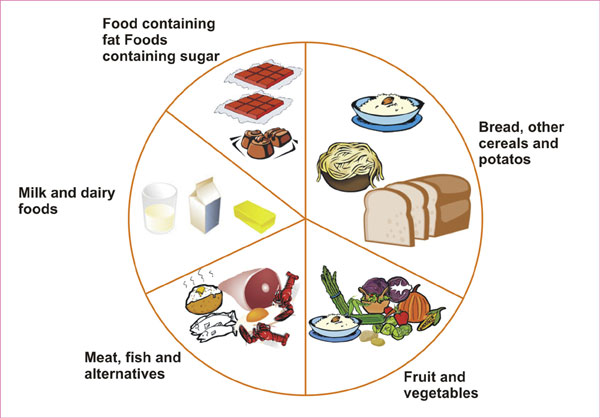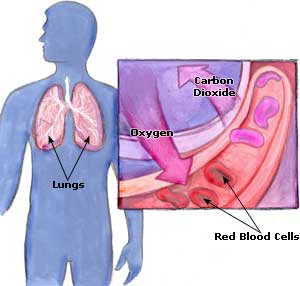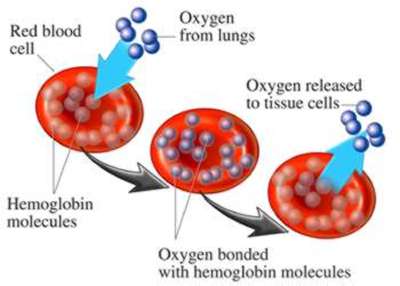
ph: +96560443060
alt: +919689983542
jacksanf
- Home
- About Us
- Services
- Contact Us
- Prayer Request
- Testimonials
- Dr Jacksan Therapy

- Life Lessons

- 30 Things to Start Doing for Yourself
- 9 Ways to Become an Optimist
- 10 Mistakes Unhappy People Make
- 60 Selfless Ways to Pay It Forward
- 101 Important Life Principles To Live By Every Day
- 60 Tiny Love Stories to Make You Smile
- 15 Reasons to Run for Your Life
- 10 Life Lessons People Learn Too Late
- 25 Things I Would Tell My 20-Year-Old Self
- 10 Critical Questions You Must Ask Yourself
- 12 Unconventional Habits of Highly Productive People
- 9 Things to Think About Before You Give Up
- 15 Ways to Live, and Not Merely Exist
- 12 Things You Should Be Able to Say About Yourself
- 20 Things to Start Doing in Your Relationships
- 50 Things Everyone Should Know How To Do
- 28 Dignified Ways to Impress Everyone Around You
- 12 Universal Skills You Need to Succeed at Anything
- 7 Things Happy, Healthy People Do Every Morning
- 10 Habits of Happy, Healthy Couples
- 10 Powerful Steps to Stop You from Judging People
- Yoga Cds for sale
- Learn Yoga in Goa
- Yoga practice and uses by Jacksan
- Skype yoga sessions
- Hatha Yoga for Life Book
- Yoga Practice Videos by Dr Jacksan
- Intake Form
- Psychological Counseling Intake Form
- Feedback Form
- Yoga Feedback Form
- Kickboxing
- Ecstasy Album Video
- Learn Salsa Video
- Basic and Advanced Salsa Videos
- Zumba
- Do I need Therapy Test
- Free Ebooks
- Products for PowerPoint Presentations
- Career Test

- Questionnaire on self-esteem
- Student Motivation Survey Self-Assessment
- Career Profile Analysis
- Domestic Violence Screening Test
- Woman Abuse Screening Tool
- Battered Woman Test
- Dissociative Experiences Scale
- Parent-Child Internet Addiction Test
- Free Fitness Profile
- Alcoholism Test
- Drug Abuse Screening Test
- Sexual Addiction Screening Test
- Gambling Test
- ADHD Quick Screening Test
- Generalized Anxiety Disorder
- Panic Attack Test
- Post-Traumatic Stress Disorder Test
- Obsessive-Compulsive Disorder Test
- Mood Disorder Questionnaire
- Stress: Workaholic Test
- Autism Spectrum Test
- Project on Emotional Intelligence

- Strength of Character
- Success factor
- Attitude
- Social Intelligence
- Content or restless
- Content or Restless 2
- Extrovert or introvert
- How assertive are you?
- Laterality
- Optimist or pessimist
- Aggression
- Adventurous or Timorous
- Adventurous or Timorous 2
- How patient are you?
- Planned or spontaneous
- Self-confidence
- Emotional
- How well do you cope under pressure?
- Tactful or undiplomatic
- Leadership factor
- Tough or tender
- Open or Close
- Open or Close 2
- Do you have the gift of thrift?
- How obsessive are you?
- Home Remedies and Natural Cures

- Abrasions
- Acne
- Acne Scars
- Alcoholism
- Allergies
- Alzheimer
- Amnesia
- Anemia
- Angina
- Anorexia
- Anxiety
- Appendicitis
- Arteriosclerosis
- Arthritis
- Asthma
- Athletes Foot
- Autoimmune Disease
- Back Pain
- Backache
- Bacterial Vaginitis
- Bed Sores
- Bedwetting
- Belching
- Blemishes
- Bloating
- Blocked Milk Duct
- Body Odor
- Body Rash
- Boils
- Bone Spur
- Breast Care
- Bronchitis
- Bruises
- Burning Tongue
- Burns
- Bursitis
- Cankar Sores
- Carpal Tunnel
- Cataract
- Celiac Disease
- Chafing
- Chest Congestion
- Chicken Pox
- Chlamydia
- Cholera
- Cirrhosis of the Liver
- Cold Sores
- Colitis
- Common Cold
- Common Digestive Disorders
- Dizziness
- Dry Skin
- Ear Infection
- Earache
- Eating Disorders
- Eczema
- Edema
- Endometriosis
- Enema
- ENT Disorder
- Eye Infection
- Female Sterility
- Fever
- Flatulence
- Freckles
- Frequent Urination
- Fungal Infections
- Gall Bladder Disorders
- Gastritis
- Genital warts
- GERD
- Gingivitis
- Goitre
- Gout
- Gray Hair
- Halitosis
- Hangover
- Hay Fever
- Head Congestion
- Head Lice
- Headaches
- Heat Stroke
- Hemorrhoids
- Herpes
- Hiccups
- High Blood Cholesterol
- High Blood Pressure
- Hives
- Hyperacidity and Heartburn
- Hyperthyroidism
- Hysteria Disorder
- Indigestion
- Influenza
- Insomnia
- Interstitial cystitis
- Intestinal Worms
- Irritable Bowel Syndrome (IBS)
- Itching
- Jaundice
- Jock Itch
- Kidney Stones
- Knee Pain
- Laryngitis
- Leg Cramps
- Lethargy
- Leucoderma
- Leucorrhoea
- Lice Treatment
- Liver Disease
- Loss of Hair
- Low blood pressure
- Low Blood Sugar
- Low Immunity
- Lyme Disease
- Malaria
- Mastitis
- Measles
- Menopausal Disorders
- Menstrual Cramps
- Menstrual Problems
- Migraine
- Moles
- Mononucleosis
- Morning sickness
- Mumps
- Nasal Congestion
- Nausea
- Nephritis
- Neuritis
- Nosebleeds
- Obesity
- Oral Candidiasis
- Orchitis
- Osteoporosis
- Palpitation
- Peeling Skin
- Peptic Ulcer
- Phlegm
- Piles
- Pimples
- Plantar Fascia or Plantar Fasciitis
- Pneumonia
- Poison Ivy
- Polycystic Ovarian Syndrome
- Premature Ejaculation
- Premature Greying of Hair
- Premenstrual syndrome (PMS)
- Prostate Disorders
- Psoriasis
- Pyorrhoea
- Razor Burns
- Respiratory Diseases
- Retain teeth and lip color
- Rheumatism
- Ringworm
- Scabies
- Schizophrenia
- Scurvy
- Sexual Disorders
- Sexual Impotence
- Shoulder Pain
- Sinusitis
- Skin Blemishes
- Skin Disease
- Sleep Apnea
- Sleeping Disorders
- Snoring
- Sore Nipples
- Sore Throat
- Spring Ailments
- Stress
- Stretch Marks
- Sunburn
- Sweating Disorder
- Swimmers Ear
- Tennis Elbow
- Thinning Hair
- Throat Obstruction
- Thyroid
- Tinea Versicolor
- Tinnitus
- Toe Nail Fungus
- Tonsillitis
- Toothache
- Tuberculosis
- Underweight
- Urinary Tract Infection (UTI)
- Urticaria
- Vaginal Infections
- Varicose Veins
- Vertigo
- Vomiting
- Warts
- Wheezing
- Whooping Cough
- Winter Ailments
- Womens Health Issues
- Wrinkles
- Yeast Infection
- Zits
- Raven Test

- TRIGUNAS TEST

Anemia
 | |
Anemia may be defined as a condition in which there is a decrease in the quantity of haemoglobin or in the number of red cells. Anemia is among the most common ailments affecting human beings. Nearly half the blood flowing in our veins and arteries consists of red blood cells which carry oxygen to the tissues. Approximately one trillion or 100 million new blood cells are formed daily in the bone marrow. The raw materials required in the production of these cells are iron, proteins, and vitamins, especially folic acid and B12. Of these, iron and proteins are essential in building up the red coloring matter called haemoglobin. A red cell has a lifespan of approximately one hundred and twenty days and is then destroyed and replaced. Each person should have about 15 gm of haemoglobin per 100 ml of blood, and a blood count of approximately five million red cells per millimetre of blood.
Symptoms of AnaemiaWeakness, Fatigue, Lack of Energy and DizzinessThe patient usually complains of weakness, fatigue, lack of energy and dizziness. Other symptoms include a haggard look, premature wrinkles, dull and tired looking eyes, poor memory, shortness of breath on exertion, headache, slow healing of wounds, and palpitations. The skin and mucous membranes look pale. Iron deficiency anemia symptoms and treatment can vary from case to case but bruising and hair loss are extremely common anemia related problems. This is because the inadequate supply of oxygen to the cells of the skin results in slower healing and so bruising is one of the side effects of anemia. In the same manner, the roots of the hair receive less oxygen as well and so they are considerably weakened. Topical applications and other such methods of hair loss treatment may not have any effect and it will be necessary to treat the root cause of the problem- the anemia, in order to prevent hair fall. Anemia often causes the skin on the extremities to remain cold and clammy. The skin on the palms and soles of a person suffering from anemia will generally appear pale. Symptoms of anemia in women may be more severe as compared to men. This is due to the regular loss of blood during menstruation which aggravates the condition. Anemia in women, especially during pregnancy, is a very common problem and immediate dietary changes would help treat this condition. Signs and symptoms of anemia during pregnancy include breathlessness and giddiness. Keep in mind that the symptoms of anemia in women are very different from those seen in infants and children. |

Copyright 2006 - 2023. ThinkPositiveLiveWell
All rights reserved.
ph: +96560443060
alt: +919689983542
jacksanf




